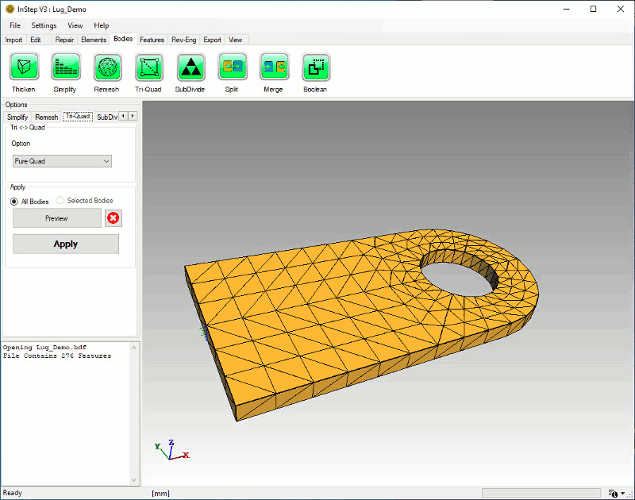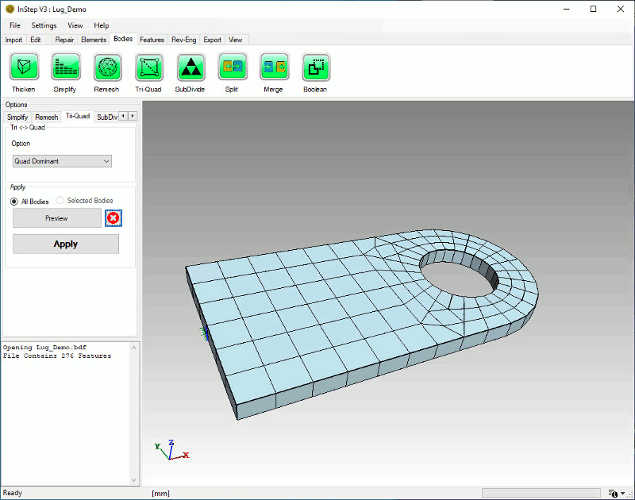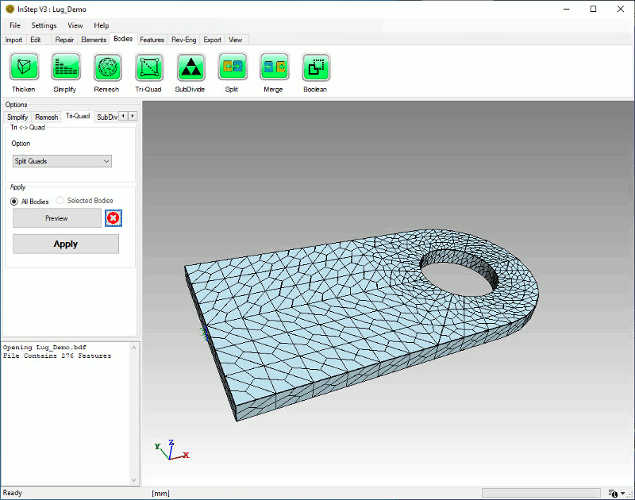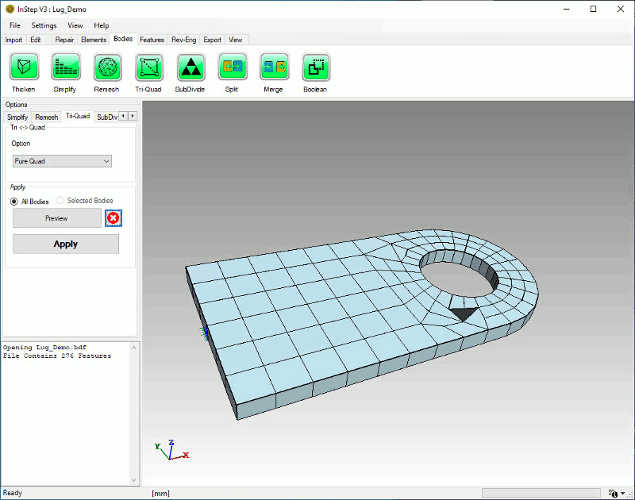Bodies - Tri/Quad Converter
Time to read: ~3 min
The Tri-Quad converter tool is a more specialized tool. It allows conversion between triangular and quadrilateral facets.
Note that if the data imported consist of quadrilaterals, the data will first need to be separately triangulated through the Polygon Tab page.
The tool generally allows triangular facets to be converted to quadrilaterals by a few different methods, described below and accessed through the
Option dropdown in the Tri-Quad tab page which can be either accessed directly or by clicking on the Tri-Quad button in the main tool bar.
Pure Tri
This option is included to provide a reversal of the conversion to quad facets. The process is simply to divide each quadrilateral facet into two triangles
by splitting across the diagonal.
An example for the different methods is shown:
 Example file containing triangles only
Example file containing triangles only
Quad Dominant
The conversion of a mesh to a Quad-Dominant mesh follows the idea that for each triangle there is a more or less ideal, neighboring triangle which
it can be merged with. The pairing of two triangles follows a matching and sorting algorithm and should generally result in a mesh that consists
of a reasonably high percentage of quadrilaterals with triangles remaining anywhere where a merge would not provide a good quality facet. This approach
can be applied to both open and closed (=solid) bodies.
 Example using Quad Dominant method
Example using Quad Dominant method
Split Quads
The Split Quad option is a brute force alternative for cases where all triangles need to be converted to quadrilaterals and an increase in the number of
facets is not of any great concern. The approach is essentially a Catmull-Clark algorithm but without smoothing of the facet corner vertices. The result is that
the facets, when viewed with Edge display (Alt+E) enabled, resemble a more patchy surface with a distinct distribution of edges.
 Example using Split Quad method
Example using Split Quad method
Pure Quad
A pure Quad mesh can be obtained for a majority of meshes by iteratively improving on the Quad Dominant mesh to achieve a mesh that consists of only
quadrilateral facets. This result is not guaranteed for all cases, but it can frequently be obtained, especially if the mesh has been remeshed to
a reasonably good quality representation.
In this example, there is a single facet that appears out of place. In this case, this is due to how the normal vector is being computed (rotating the view shows a
gradual color change) but can hint at a facet being a convex quadrilateral and further processing of such facets would generally be required.
 Example using Pure Quad method
Example using Pure Quad method